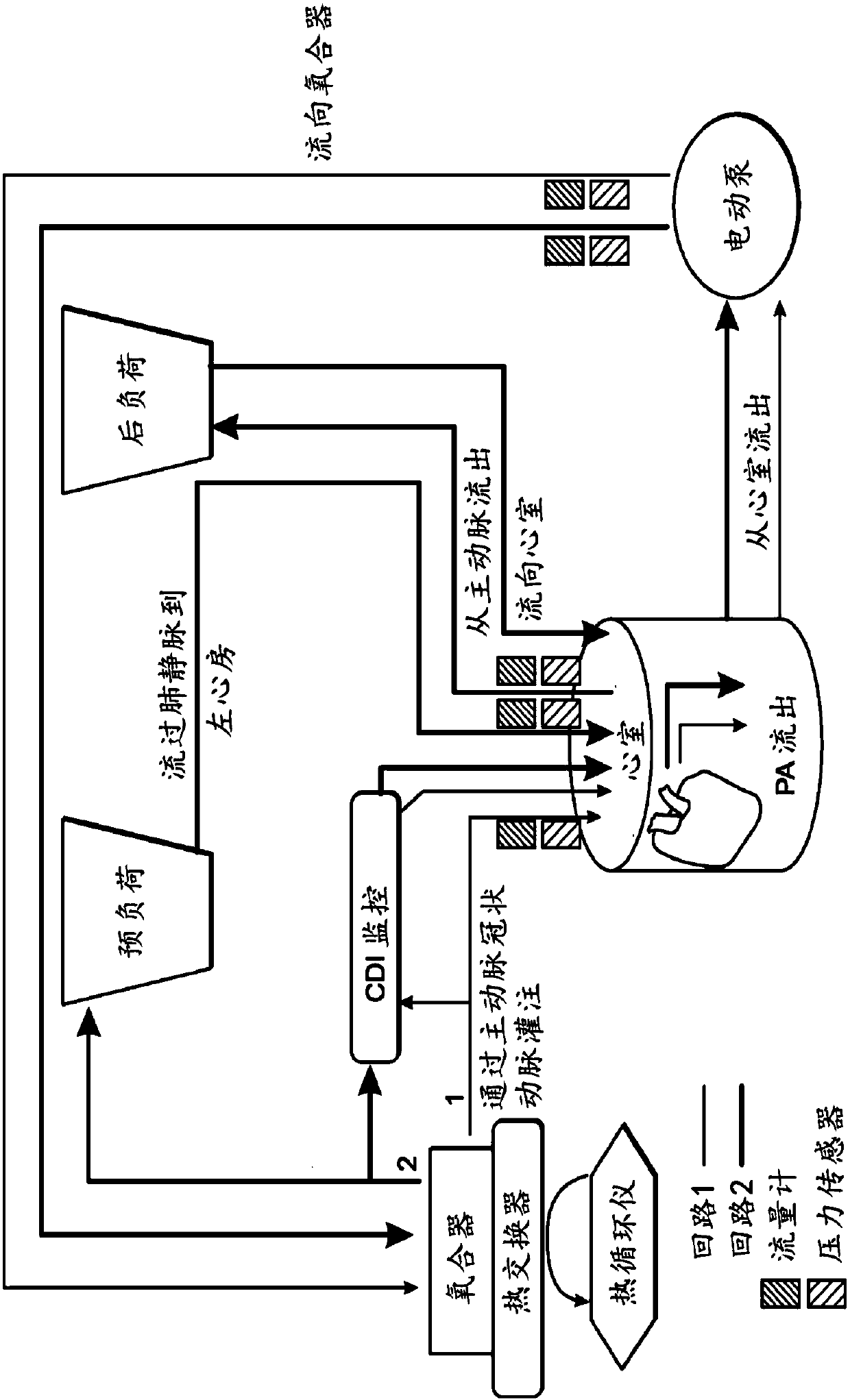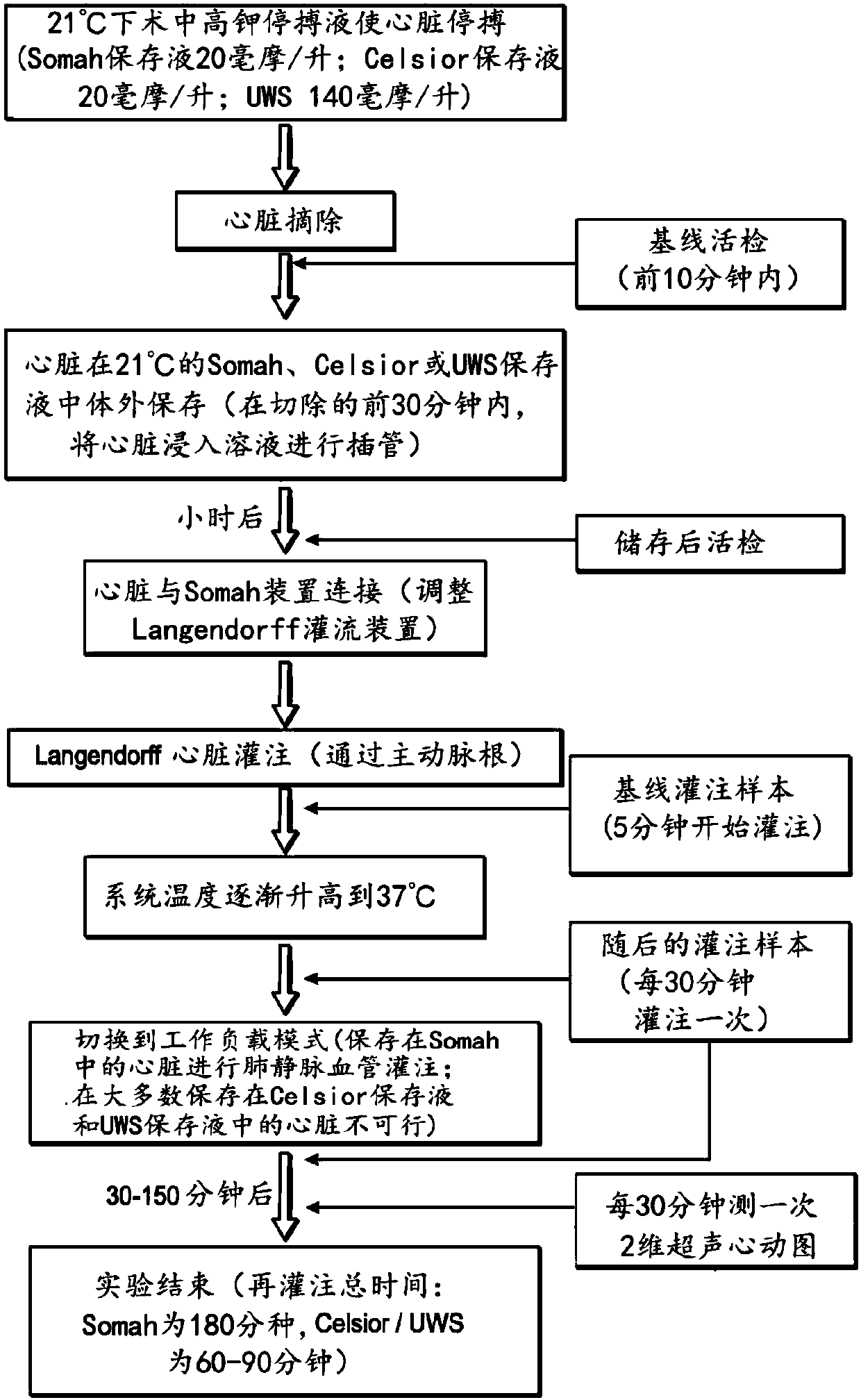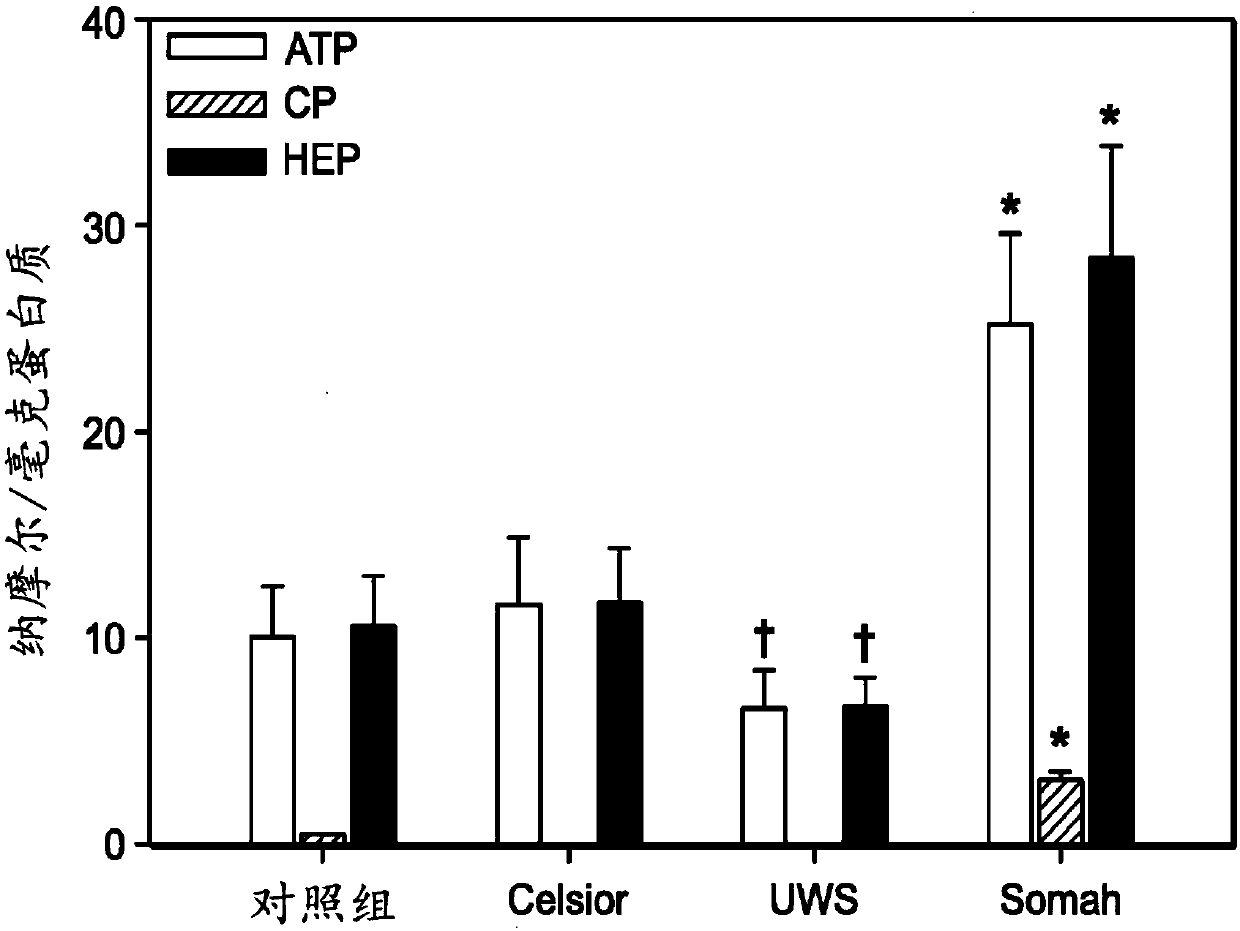Compositions and methods for tissue preservation at ambient or subnormothermic temperatures
A composition and biological tissue technology, applied in the preservation of human or animal bodies, pharmaceutical formulations, medical preparations containing active ingredients, etc., can solve the problems of tissue and cell damage, injury, etc.
- Summary
- Abstract
- Description
- Claims
- Application Information
AI Technical Summary
Problems solved by technology
Method used
Image
Examples
Embodiment 1
[0153] In the examples below, the tables are indicated with Arabic numerals (e.g. Table 1, Table 2, Table 3, etc.).
[0154] Over the past 40 years, remarkable progress has been made in the preservation of solid organs such as livers, kidneys, and preservation in vitro for up to hours. Unfortunately, this same approach cannot be applied to heart storage, which can only be stored in vitro for 4-6 hours even after decades of painstaking efforts (Churchill TA. Organ preservation for transplantation. In: Storey KB, editor. Functional Metabolism: regulation and adaptation. John Wiley-Liss; 2004; 529-55). Major advances have included the conceptual development of preservation solutions such as Celsior and the University of Wisconsin solution (UWS; Table 1-1), which were formulated based on the prevention of edema during "cold storage at 4°C"—a method used in organ preservation. The ingrained notion that only short-term ex vivo storage of organs is permitted. The existence of this ...
Embodiment 2
[0186] This case examines whether the recovery of cardiac function after storage is proportional to the maintenance of the energy state of the organ and the storage temperature, and compares cardiac preservation at 4°C, 13°C, and 21°C in Celsior and Somah solutions, respectively.
[0187] Materials and methods
[0188] Heart extraction surgery, in vitro heart storage, ATP and phosphocreatine assays, preparation of hearts for ex vivo resuscitation and functional studies, preparation of blood for ex vivo studies, Somah device and functional studies were performed as described in Case 1 ,above.
[0189] Heart weighing and biopsy. The heart chambers were emptied for weighing before the start of storage and after 5 hours. Cardiac punch biopsies (2–4 mm in diameter) were removed using punch forceps for histopathology (HP; hematoxylin and Eosin staining) and ultrastructure of Somah hearts and HEP determination of Somah and Celsior hearts.
[0190] Electron microscopy of Somah hea...
Embodiment 3
[0225] In this example, a heart harvested 30 minutes after cyclic cardiac death (DCD heart) was studied, and its storage was equivalent to 4-5 times the current clinical standard. Furthermore, the study aimed to determine the ideal temperature for long-term storage of DCD hearts in Somah in a functionally viable state for transplantation.
[0226] Materials and methods
[0227] Animal Model Three-month-old male Sprague-Dawley rats were used in strict accordance with the protocols approved by the Animal Research Subcommittee.
[0228] Solution preparation and other materials. Somah's solution was prepared as described above. Freshly prepared solutions were filter sterilized at 4° C. using a 0.4 mm filter (Vidaur) and used within 24 hours. Unless otherwise stated, all chemical reagents and antibodies were obtained from Sigma Chemicals, Inc. (St. Hercules, CA) or Danco Corporation (Carpinteria, CA, USA).
[0229] Cardiac Extraction, Storage, and Simulated Reperfusion Rats we...
PUM
| Property | Measurement | Unit |
|---|---|---|
| Diameter | aaaaa | aaaaa |
Abstract
Description
Claims
Application Information
 Login to View More
Login to View More - R&D
- Intellectual Property
- Life Sciences
- Materials
- Tech Scout
- Unparalleled Data Quality
- Higher Quality Content
- 60% Fewer Hallucinations
Browse by: Latest US Patents, China's latest patents, Technical Efficacy Thesaurus, Application Domain, Technology Topic, Popular Technical Reports.
© 2025 PatSnap. All rights reserved.Legal|Privacy policy|Modern Slavery Act Transparency Statement|Sitemap|About US| Contact US: help@patsnap.com



